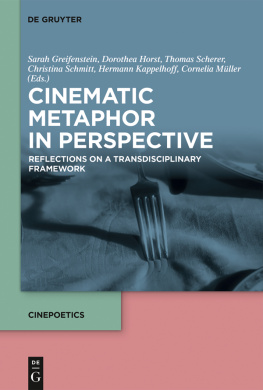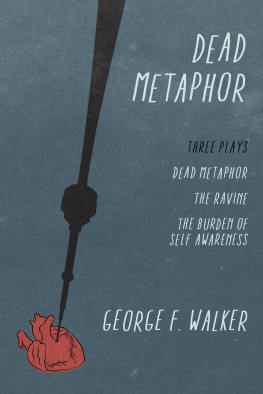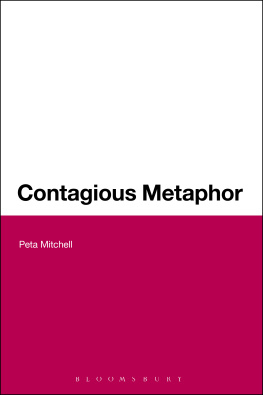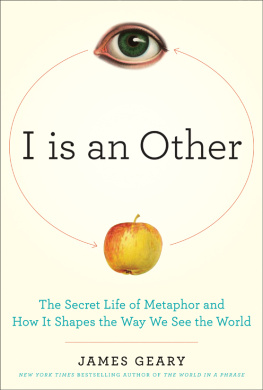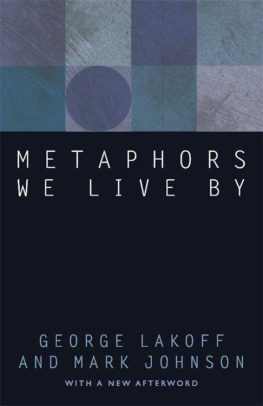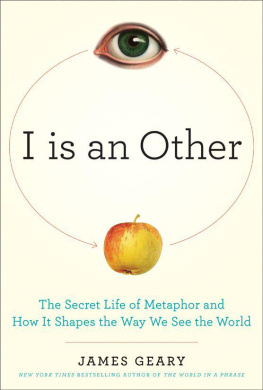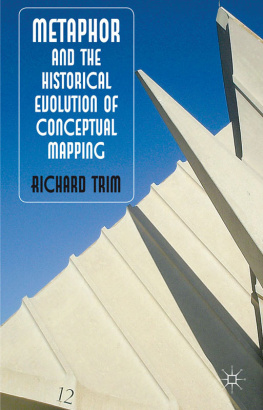Contents
Guide

Cinematic Metaphor in Perspective
Cinepoetics

Edited by
Hermann Kappelhoff and Michael Wedel
Volume 5

ISBN 978-3-11-061223-3
e-ISBN (PDF) 978-3-11-061503-6
e-ISBN (EPUB) 978-3-11-061388-9
ISSN 2569-4294
Disclaimer (figures): All figures were created by the authors, if not indicated otherwise. All screenshots were captured by the authors.
Library of Congress Control Number: 2018951329
Bibliographic information published by the Deutsche Nationalbibliothek
The Deutsche Nationalbibliothek lists this publication in the Deutsche Nationalbibliografie;
detailed bibliographic data are available on the Internet at http://dnb.dnb.de.
2018 Walter de Gruyter GmbH, Berlin/Boston
Cover image: Film still from SPELLBOUND (Alfred Hitchcock, USA 1945)
www.degruyter.com
Acknowledgements
The transdisciplinary framework of cinematic metaphor (Mller and Kappelhoff 2018), and the reflections on it in this edited volume, are the outcome of research enabled by Cinepoetics , Center for Advanced Film Studies at the Freie Universitt Berlin (funded by the German Research Foundation). Within the frame of its first annual theme Metaphor Film Images, Cinematic Thinking, and Cognition (2015/16), various invited research fellows, project associates, and other visitors to Cinepoetics brought their expertise from different disciplinary backgrounds to colloquia, workshops, and film-analysis sessions. We are grateful for their engaging and inspiring contributions to our work from which we greatly benefited. In particular, we thank our authors Lynne Cameron, Alan Cienki, Anne Eusterschulte, Kathrin Fahlenbrach, Ray Gibbs, and Michael Wedel for their stimulating and enlightening contributions to this edited volume, thereby creating a temporary stabilization in the flow of our process of joint thinking and exchange.
During the biennial conference of the Association for Researching and Applying Metaphor (RaAM) that we hosted in Berlin in 2016 with a focus on Metaphor in the Arts, in Media and Communication, we had the opportunity to extend the scope of our discussion to an international community of metaphor scholars through a Cinepoetics Roundtable. We thank all participants for their productive questions, comments and reactions.
Beyond being a contributing author, Lynne Cameron took on an important role as a book coach for this edited volume, bringing in her rich academic expertise and providing us with support, inspiration, and motivation during the entire publication process. Thanks to her lucid suggestions and supportive companionship the book project became an exciting and enjoyable joint journey. We are deeply grateful to her for making this journey together with us.
Throughout the publication process, Eileen Rositzka was an extremely helpful and always cheerful adviser accompanying the communication with the publisher. We thank Stella Diedrich and Anna Hofs from De Gruyter for their support and advice in preparing the book for publication.
We are grateful to Amber Shields, Mary Hennessy and Lynne Cameron for their meticulous reading and for polishing the English throughout the book.
Without the work of our student assistants Derya Demir, Philine Mayr and Raphael Schotten, the publishing process could not have been realized so smoothly. We gratefully acknowledge their commitment and support in preparing the manuscript for publication.
Berlin, June 2018
Sarah Greifenstein, Dorothea Horst, Thomas Scherer, Christina Schmitt,
Hermann Kappelhoff, and Cornelia Mller
Sarah Greifenstein, Dorothea Horst, Thomas Scherer, Christina Schmitt, Hermann Kappelhoff, and Cornelia Mller
Introduction
What is cinematic metaphor?
What distinguishes interdisciplinary from transdisciplinary work is what separates a simile from a metaphor. Both interdisciplinarity and simile place their two benchmarks side by side, as separate and distinct, and, on this basis, suggest similarity or comparability. Transdisciplinarity and metaphor on the other hand, remove their referential realms from such a self-contained state and bring them together with the result that the two compose something new, something shared that is more than the sum of its previous parts. Both referential realms give up their isolation and self-containedness in order to come together into existence as something third through an experiencing and understanding in terms of the other.
As a transdisciplinary theoretical and methodological approach, Cinematic Metaphor emerged and developed from a collaboration between film studies and linguistic metaphor research along with integrative exchanges on different disciplinary perspectives at Cinepoetics , Center for Advanced Film Studies at the Freie Universitt Berlin. The monograph of Mller, Kappelhoff, and colleagues Cinematic Metaphor. Experience Affectivity Temporality (2018) is the outcome of this longstanding work and of numerous fruitful discussions on metaphor in audiovisual media and face-to-face interaction. Starting from the media-character of audiovisual images as cinematic movement-images rather than as moving images, the book develops a theoretical and methodological framework for metaphor in audiovisual media as performative action which is grounded in the dynamics of viewers embodied intersubjective experiences with film.
This framework constitutes the key reference for this edited volume, Cinematic Metaphor in Perspective. Reflections on a Transdisciplinary Framework with contributions from applied and cognitive linguistics, film and media studies, media history, philosophy, and psychology. As a companion volume to Cinematic Metaphor. Experience Affectivity Temporality , it addresses the transdisciplinary exchange on cinematic metaphor that has both set the stage for its emergence and advanced its further development over the past ten years. The contributing scholars explore how the framework of cinematic metaphor inspires their views of metaphor in film and of metaphor theory and analysis more generally. In this light, the essays of this edited volume provide insight into the contributors (transdisciplinary, metaphorical) process of experiencing and understanding their research area in terms of cinematic metaphor or, as Max Black has described it, into a world seen from certain perspective (Black 1993 [1977], 38), thereby creating new realities.
An alternative approach to the analysis of audiovisual media
What is the necessity for, and added value of, a new perspective on metaphors in film, television, and video, given the range of existing cognitive media studies (e.g., Cognarts and Kravanja 2015), cognitive-linguistic (e.g., Forceville and Urios-Aparisi 2009), and multimodal research (e.g., Wildfeuer and Bateman 2017) in the field of audiovisual media? The crucial theoretical and empirical starting point, and key argument for the framework of cinematic metaphor, is the media specificity of audiovisual images as movement-images, not as moving pictures representing content. That is why the notions of audiovisual metaphor (Fahlenbrach 2010, this volume, Whittock 1990) or multimodal metaphor (e.g., Forceville 2009) that take metaphor in language as a reference point and, furthermore, consider audiovisual images to consist of accumulated articulatory modes representing moving content, reach their limits when it comes to the dynamics of the cinematic movement-image (Deleuze 2008 [1983]). The term movement-image refers to the specific mode of perception that unfolds temporally and experientially along viewers processes of film-viewing and thereby orchestrates their processes of meaning-making. As such an aesthetic and logical framing, the movement-image constitutes a fundamental principle a media mode of experience that is shared by audiovisual images, in whatever form, more generally. Cinematic metaphors emerge with this movement experience of film-viewing, rather than from represented content or narratives that cognitive media studies of metaphors and multimodal metaphor analyses of audiovisual media take for granted.

